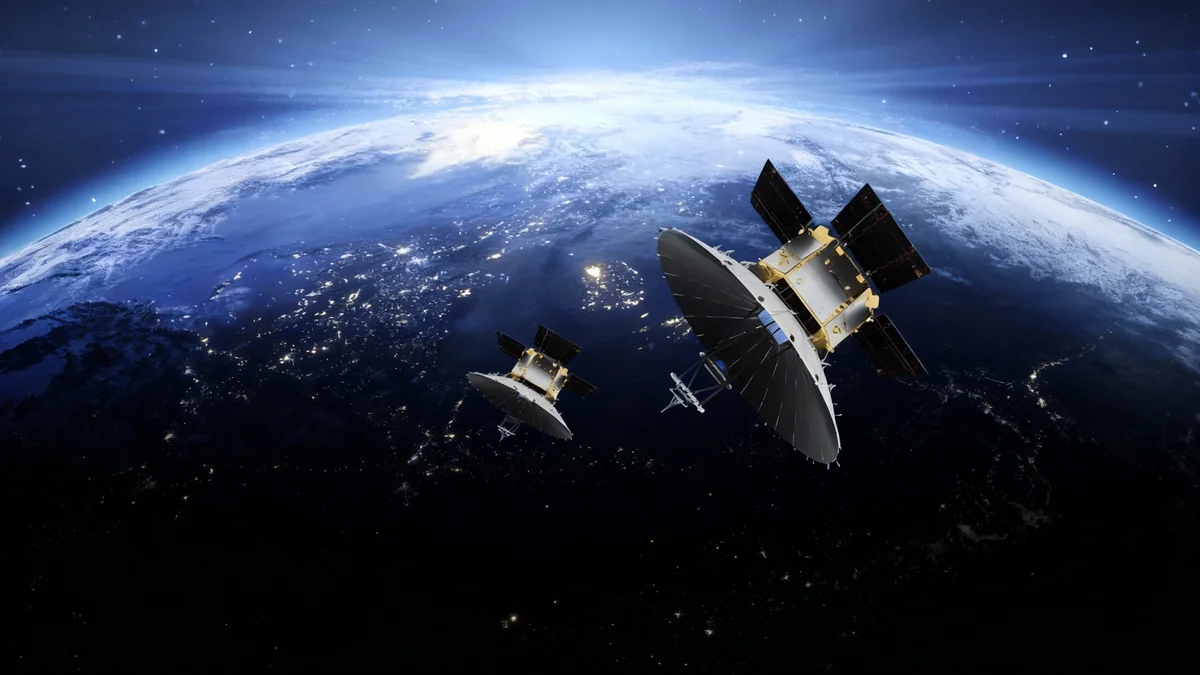A California-based startup is investing its own capital to develop and demonstrate a space-based weapons platform, a critical component of the proposed multi-trillion-dollar "Golden Dome" missile defense system. The company, Apex, plans to launch its prototype mission in June 2026, signaling a major shift in how the Pentagon procures next-generation military technology.
Key Takeaways
- Los Angeles startup Apex is spending $15 million of its own funds on "Project Shadow," a demonstration of a space-based interceptor platform.
- The technology is intended for the "Golden Dome" missile shield, a defense initiative with cost estimates ranging from $175 billion to over $3 trillion.
- The Pentagon is using a new procurement model, requiring companies to self-fund prototypes before competing for larger production contracts.
- Major defense contractors like Lockheed Martin and Northrop Grumman are also developing similar technologies, creating a competitive environment.
A New Approach to Defense Contracting
Los Angeles-based Apex is moving forward with an ambitious plan to prove its satellite technology can serve as an orbiting weapons platform. The company announced it is developing a demonstration mission, named Project Shadow, entirely on its own dime.
This self-funded approach, costing Apex approximately $15 million, aligns with a new Space Force strategy. The military branch has requested prototype proposals for space-based interceptors (SBIs) but requires contractors to finance the initial development and launch. Companies are essentially placing a bet on their own technology with the hope of securing a lucrative production contract later.
"Apex is built to move fast, and that is exactly what America and our allies need to ensure we win the New Space Race," said Ian Cinnamon, Apex's co-founder and CEO. "Apex isn’t waiting for handouts or contracts; we are developing this Orbital Magazine technology on our own dime and moving incredibly fast."
The company, founded in 2022, has already raised over $500 million from investors and launched its first satellite in 2024. This new venture aims to showcase a specialized satellite bus called an "Orbital Magazine," designed to host and deploy multiple missile interceptors in orbit.
What is the Golden Dome?
First proposed by the Trump administration, Golden Dome is a comprehensive national missile defense system. It is designed to protect the United States from ballistic missiles, hypersonic glide vehicles, and drones. Unlike previous systems, a key and controversial element is a large constellation of space-based interceptors ready to neutralize threats shortly after launch. The program's full scope and cost remain undefined, leading to wide-ranging estimates.
The Technology Behind Project Shadow
The Project Shadow mission, scheduled for a June 2026 launch, is designed to validate the core functions of the Orbital Magazine. Once in orbit, the spacecraft will deploy two prototype interceptors, each equipped with a high-thrust solid rocket motor from a third-party supplier.
According to Apex, the demonstration will test several key capabilities:
- Maintaining environmental control of the interceptors while in orbit.
- Issuing a fire control command to deploy the interceptors.
- Establishing an in-space cross-link for real-time target updates after deployment.
While the initial demo will be small-scale, the company's vision is for a much larger platform. Future Orbital Magazines could carry over 11,000 pounds (5,000 kilograms) of interceptor payloads, enabling thousands of SBIs to be staged in orbit for rapid response.
Technical Readiness: Unlike the 1980s "Star Wars" initiative, experts believe all the individual technologies required for Golden Dome—including satellites, boosters, seekers, and fire control—already exist. The primary challenge is integrating them into a cohesive "system of systems."
Cinnamon emphasized that the pieces for such a system are available. "The key is, all those pieces need to talk to each other and actually come together, and that integration is really, really difficult," he stated. He added that for the system to be effective, a sufficient number of interceptors must be deployed in space.
A Crowded Field of Competitors
Apex is the first to publicly detail its SBI demonstration, but it faces stiff competition from established defense giants. America's largest military contractors have openly signaled their intent to compete for a piece of the potentially trillion-dollar Golden Dome program.
Lockheed Martin's Plans
During a recent earnings call, Lockheed Martin CEO James Taiclet confirmed the company has submitted proposals for space-based interceptors. "We’re actually planning for a real on-orbit, space-based interceptor demonstration by 2028," Taiclet said.
He described the company's efforts as building "full operational prototypes, not things in labs... things that will go into space." This indicates that major players are well beyond the conceptual phase and are actively developing hardware.
Northrop Grumman's Expertise
Similarly, Northrop Grumman CEO Kathy Warden stated her company is conducting "ground-based tests" of technology related to SBIs. As the nation's leading supplier of solid rocket motors—a crucial component for interceptors—Northrop Grumman is a formidable contender.
"We are providing some high-fidelity operational analysis that can help the customer understand those requirements, as well as ourselves," Warden noted, highlighting the company's deep involvement in defining the system's architecture.
The race to develop and deploy these space-based assets is intensifying. While startups like Apex bring speed and venture capital-fueled innovation, they are competing against the vast resources, political influence, and decades of experience of the defense industry's largest firms. The outcome will likely shape the future of national security and space-based military capabilities for decades to come.





